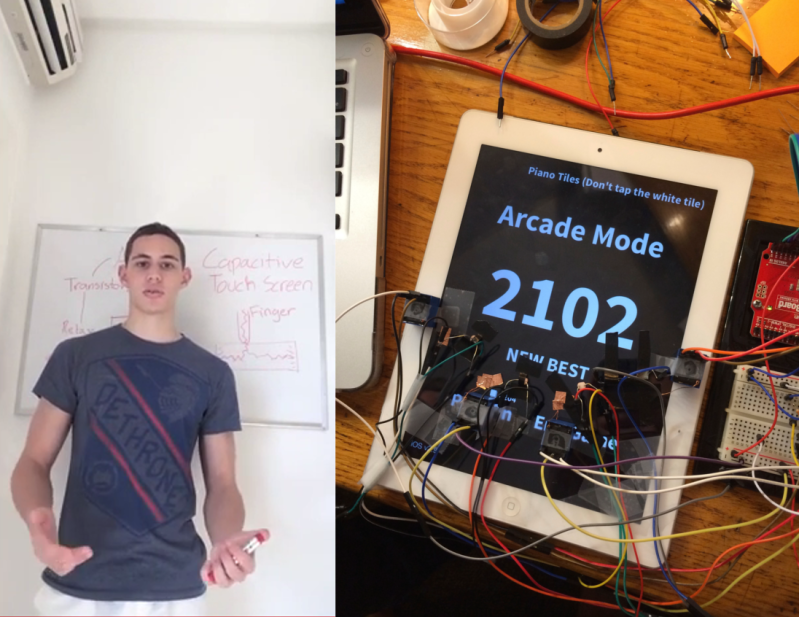Like many mobile gamers, [Daniel] has found himself caught up by the addictive “White Tiles” game. Rather than play the game himself though, [Daniel] decided to write his own automatic White Tiles player. While this hack has been pulled off before, it’s never been well documented. [Daniel] used knowledge he gleaned on Hackaday and Hackaday.io to achieve his hack.
The basic problem is sensing white vs black tiles and activating the iPad’s capacitive touch screen. On the sensing end, [Daniel] could have used phototransistors, but it turned out that simple CdS cells, or photoresistors, were fast enough in this application. Activating the screen proved to be a bit harder. [Daniel] initially tried copper tape tied to transistors, but found they wouldn’t reliably trigger the screen. He switched over to relays, and that worked perfectly. We’re guessing that changing the wire length causes enough of a capacitance change to cause the screen to detect a touch.
The final result is a huge success, as [Daniel’s] Arduino-based player tears through the classic game in only 3.9 seconds! Nice work [Daniel]!
Click past the break to see [Daniel’s] device at work, and to see a video of him explaining his creation.
















Pretty soon we can phase out humans.
Exactly – we can have machines take on the heavy burden of playing our video games for us. I know that would free up a LOT of time on my son’s schedule.
Or don’t buy video games in the first place ;-)
I welcome our robot overloads, and their ability to pwn us a games!
*Sigh… anti-arduino simply because of this…
I’ve seen other projects like this do the exact same thing for Timberman, Pokemon, Guitar Hero, and White Tile… why do we need to see another? (I can see if something were unique about it… Sorry to be a pessimist, and props to the creator, just don’t feel it’s showcase worthy anymore.
Transistors, MOSFET all has parasitic capacitance. It is documented in the datasheet that you don’t bother to learn to read. Duh.
A lot of people see transistors as just switches and will not immediately think that this will be a problem
That’s part of the learning curve. Nothing in the real world is without parasitics or non-ideal behavior.
A bit of understanding how the cap sense works, lateral thinking and basic high school level theory might show you how to get it to work with a transistor or a good MOSFET and hint – let’s say something in series to make it work. Now may be that would make a good interview question for a high school exam bonus question exam or even a job interview question for a junior engineer these days.
Watch The Lego Movie the other day. That is a good commentary of what’s going on with electronics as a hobby these days.
What am I going to do without the plans?
Could be done with 555s. Or a single lm324.
Show us.
Could you please post pictures of the bread board, and schematics on your setup?
best explanation of activating the cap sense using relays. been using breadboard wire and they are a pain , they dont want to be told where to sit,